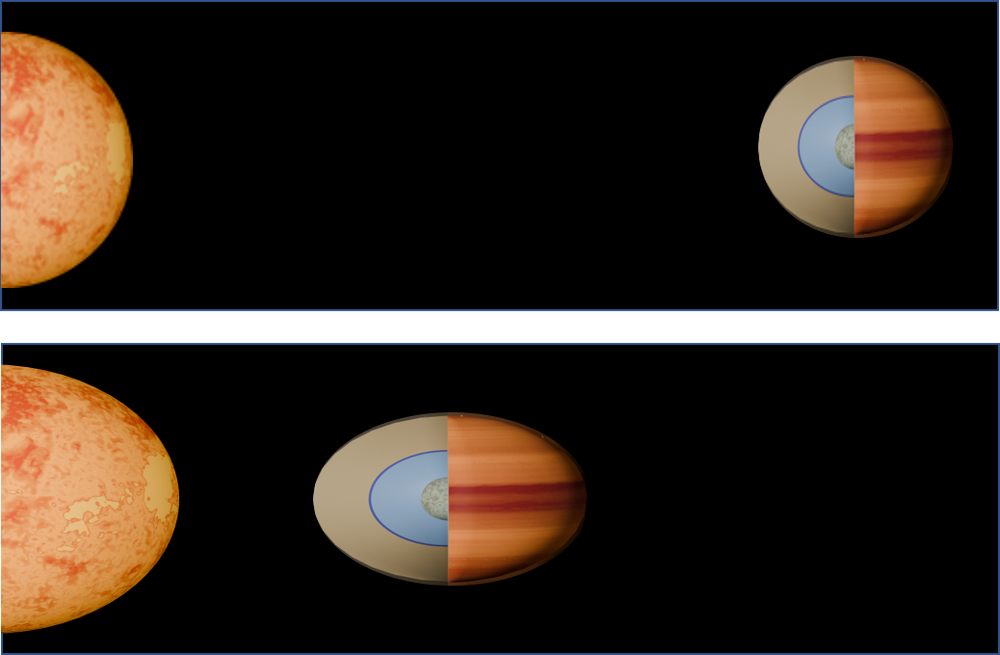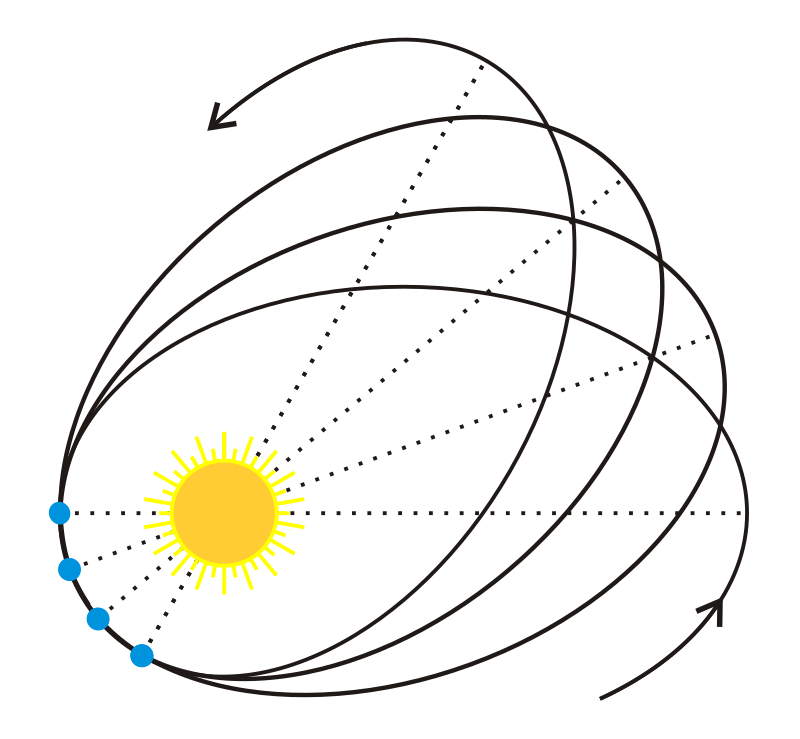Astronomers are puzzled: Is WASP-43b a fast spinning planet in a slowing dance?

Do you know a sextant? Perhaps yes, but do you also know the gnomon and astrolabe? All three are astronomical instruments that have been used since ancient times. But they are also the names for an exoplanet system in the constellation Sextant. This highly interesting planetary system is located 280 light years away around the star WASP-43, which was discovered back in 2011 and has been the subject of many scientific studies.
Lia Bernabò, a PhD student at the DLR Institute of Planetary Research in Szílard Csizmadia's research group, and her colleagues have analysed observations of the exoplanet WASP-43b, including those obtained by the James Webb Space Telescope, to investigate tidal interactions between the star and the planet. The results are now published in Astronomy & Astrophysics.
WASP-43: ideal to study tidal forces
The star belongs to spectral class K, which is slightly smaller and lighter than our sun. It hosts a massive hot Jupiter which completes one orbit in only about 19 hours. The small distance between the host star and the planet, as well as their favourable mass ratio of two Jupiter masses to 0.7 times solar mass, make the system among the best candidates to study interactions due to tidal forces.
The planet’s shape is deformed by tidal forces and, depending on its composition and internal structure, it does not have an ideal spherical shape but is flattened. This is directly reflected in changes to the orbit which result in a continuous shrinkage and rotation of the orbit. Both effects have now been determined for the first time in an exoplanet system.
Circular or ellipsoidal orbit?
Previously, data analyses of WASP-43 did not conclusively determine the shape of the planet’s orbit. In Bernabo and colleagues’ work, they have shown that the planet moves in an elliptical orbit. An elliptical orbit is the prerequisite for effects in changing the orbital parameters.
The orbital period decreases...
Since the planet was discovered thirteen years ago, other research groups had also investigated the question of a varying orbital period and had come to very different conclusions. By performing a homogeneous data analysis of a broader database, Bernabo et al. were able to determine a decrease in the orbital period caused by tidal forces, tidal decay. The orbital period of WASP-43b decreases by around two milliseconds every year.
...and the orbit circulates around the star
However, the publication led by Lia Bernabò and her colleagues have even more to offer. Not only were they able to precisely determine the change in the orbital period, but also the so-called apsidal motion or perihelion rotation. This refers to the phenomenon that the elliptical orbit of a body continuously rotates in the orbital plane. This is caused by various disturbances, e.g. the celestial bodies do not have an ideal spherical shape, but are deformed by tidal forces. We know something like this in our Solar System, e.g. the perihelion rotation of Mercury's orbit.

Periastron rotation in the Solar System
Already in the 18th century astronomers studied how the mass distribution of a star or a planet can cause rotating orbits of a planet or a moon around them. They also discovered that the gravitational pull of other planets can lead to the same. Later, Einstein has shown that the warped space-time around a star causes further movement of the orbit. All these effects together result in the periastron-precession, i. e. the closest point of the orbit to its star is continuously wandering around the Star.
But how do you determine something like this in a planetary system that is around 300 light years away from us?
By carefully analysing existing data, including data not yet utilized and their own, new measurements obtained by the HARPS spectrograph of the European Southern Observatory in Chile. Including these data, the research group has been able to determine the two values, decrease in orbital period and apsidal rotation, for the first time in this type of planetary system - a small star and a hot, super-rotating Jupiter. This provides a key to determining the inner structure of the exoplanet itself, as changes in the orbital parameters are related to planet’s structure and mass distribution.
Precise measurements, new questions
In this case, the researchers encountered the problem that the values determined for the apsidal rotation and assumptions about the planet's rotation period could not be harmonised with a physically meaningful internal structure of the planet, unless the planet is rotating about six times faster than expected or another unseen planet is in the system.
As the presence of a second planet (or even a brown dwarf or a second star) in the system was excluded, the only remaining explanation seems to be that the planet is rotating superfast: one revolution just takes about 3-4 hours. So a full day on this planet would last for just 3-4 hours. But what causes this fast rotation of WASP-43b, one can only speculate.The study leaves us with more precise values, but with even more unanswered questions. Perhaps future missions such as PLATO will be able to find more examples of this type of exoplanet and thus explain its properties.
How did the star and planet get their names?
Initially, the names were derived from the observatory with which the discovery was made, as is often the case. In this case it was the telescope facility WASP, Wide Angle Search for Planets. The central star was given the name WASP-43 and the planet was called WASP-43b. Other planets or companions would be labelled c, d, e ... in the order of discovery.
But this planetary system was given much more euphonious names through a NameExoWorlds competition organised by the International Astronomical Union (IAU): the star WASP-43 is now also called Gnomon and the planet WASP-43b is called Astrolábos – a suggestion from Romania.
Link to the article "Characterising WASP-43b's interior structure: Unveiling tidal decay and apsidal motion" by Lia Bernabò et al, A&A, 694, A233 (2025)

